Upgrade your virtual selling strategy with these 7 practical tips
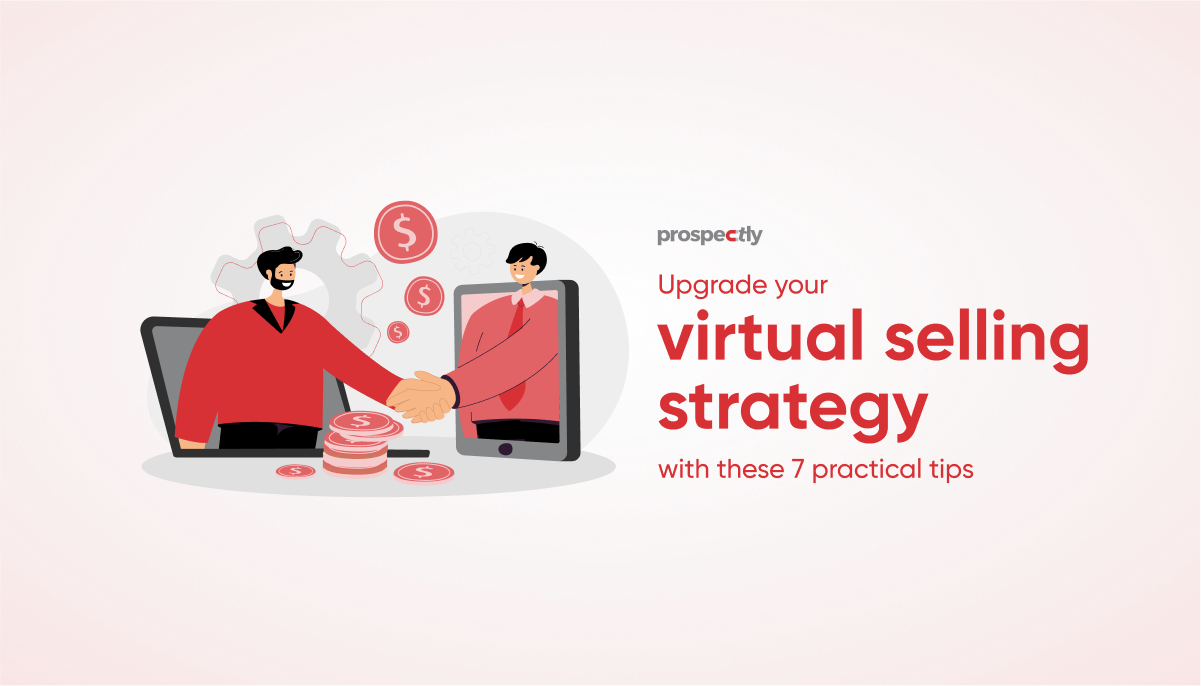
Pre-covid, in-person meetings played a pivotal role in the sales process. However, recurrent pandemic seasons inspired frontline sellers to sharpen their remote selling skills. What started as a temporary solution is increasingly becoming a key sales strategy, mainly because it can save valuable time and resources. According to Gartner, 74% CSOs (Chief Sales Officers) have recently updated/are currently updating their seller skills profile for remote sales. This blog aims to decode principal virtual selling strategies to uplift your remote selling game.
What is virtual selling?
‘Virtual selling’ or ‘remote selling’ or ‘digital selling’ is a process wherein your sales activities are executed virtually instead of conventional ‘face-to-face’ interactions. Virtual selling also necessitates strengthening your remote sales skills, whether it is technical upskilling for product demos/online meetings or the art of engaging customers over email/phone. So if you are in sales, now is the time to hone your digital sales skills and prepare for the virtual selling revolution.
Benefits of virtual selling
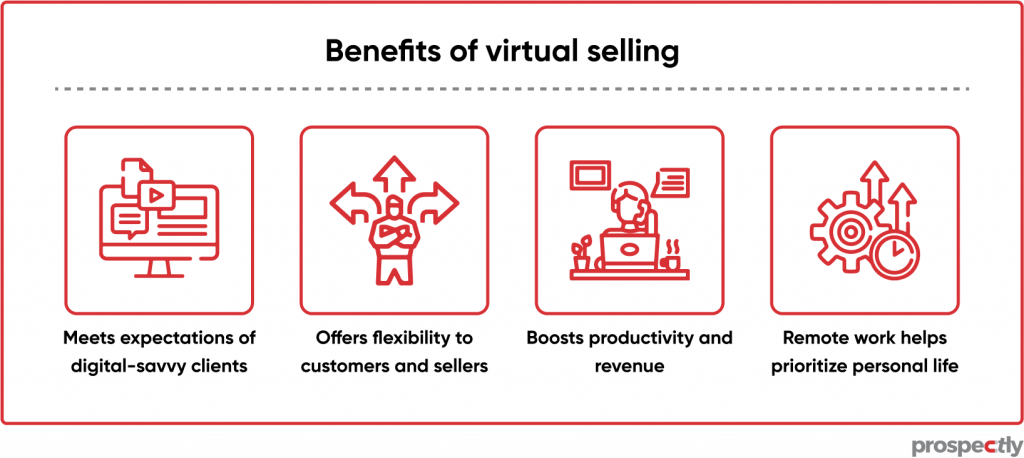
Remote selling has simplified the sales process for B2B purchasers and sellers alike. Mckinsey’s research indicates that more than three-quarters of buyers and sellers prefer self-serve and remote human engagement over in-person sales interactions.
But why has virtual selling become so alluring to the salesforce? Read on to find out.
Meets expectations of digital-savvy clients
Today’s B2B buyers are increasingly becoming digitally savvy. A recent Mckinsey survey found that 80% of B2B customers prefer virtual interactions when making purchasing decisions. And this applies to big-ticket transactions as well. B2B buyers find online purchases easier to schedule and cheaper than traveling. Adopting the virtual selling method will help you align selling activity to your customer’s preferred engagement channels and purchasing journey.
Offers flexibility to customers and sellers
Virtual selling has made it possible to seamlessly connect sellers and buyers across various locations and time zones. When sales was considered an in-person affair, sales reps traveled worldwide to meet important clients. Even on the customer’s end, important stakeholders would be flown in for such meetings. Virtual selling has made it possible to gather and interact with people from any corner of the world through your computer screen.
Documenting meetings has also never been simpler. Any effective digital meeting tool will allow recording the session, which can later be transcribed for meeting notes and follow-ups.
Boosts productivity and revenue
- According to LinkedIn, an average salesperson spends only 37.67% of their time selling. As more time selling equals more revenue, it only makes sense that you should spend most of your time on revenue-generating tasks. You can now use the time saved on sales travel to book additional meetings or other fruitful activities.
- Virtual selling drastically reduces the sales cycle. Many growth-oriented companies are utilizing AI-powered chatbots to handle preliminary sales queries. These virtual assistants qualify interested leads that are then handed over to sales reps. This shortens the buying journey along with the sales cycle.
Related: The compelling impact of artificial intelligence in sales
Let’s look at the performance of a few companies that embraced virtual selling during the pandemic.
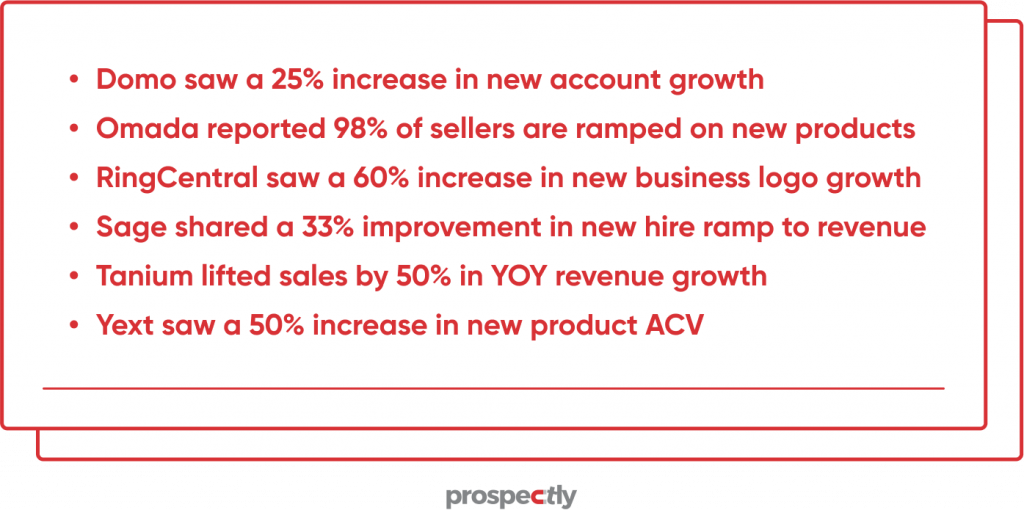
Remote work helps prioritize personal life
Remote working or hybrid working option has brought us closer to the much-desired work-life balance. Digital sellers enjoy the opportunity to save money and time on office/sales-related commutes, which gives them more time to focus on mental health. Business video platform Vidyards’s State of Virtual Selling Survey indicates that two-thirds of sales pros plan to work remotely or adapt the hybrid model in the future.
Challenges of virtual selling
Despite the advantages, virtual selling is not without pitfalls. A study conducted by the RAIN Group identified buyer engagement as the top challenge in virtual sales. Take a look at some of the other aspects that were at least somewhat challenging according to this group of sellers from the survey.

Here are some strategies to tackle these challenges.
7 Key tips to elevate your virtual sales game

Both online and offline selling require basic sales skills and unwavering resilience. However, there are some crucial traits that you need to adapt when selling on digital channels.
1. Familiarize yourself with social selling
To prepare yourself for remote sales, you need to get acquainted with the fundamentals of selling on social media. Here are a few insights.
- Create a stellar social profile on any or all of these business platforms- LinkedIn, Twitter, and Facebook. Your profile should highlight what you do, how you offer value to your customers and your relevant skills.
- Build your social network by connecting with industry leaders, peers, and prospective clients.
- Provide value by sharing information that addresses your customer’s pain points
- Actively engage with your network by liking, commenting, or resharing industry updates, news, topical articles, etc.
For comprehensive information on harnessing your social selling powers, read our blog The “whats”, “whys”, and “hows” of social selling.
2. Be proactive and precise
- Although online meetings are logistically far more convenient than offline ones, you need to do the groundwork before you step into that video call. With most of your clients switching to digital meetings, their calendars may be busier than usual. Prepare in advance and make sure you have all the materials you need for making and supporting your point at the meeting.
- Be concise and offer relevant information in a structured manner. This way, you will be respecting their time and make optimum use of the allotted meeting slot.
- A RAIN Group study states that only 26% of buyers feel that sellers are competent listeners. So if you haven’t already, it is high time you train your listening skills. Additionally, unlike in-person meetings, digital meetings will not allow you to get a feel of the meeting room or monitor your client’s body language most of the time. So listen actively, try to analyze their tone of voice, take notes and ask follow-up questions whenever required.
- The new normal has changed buyer perceptions and expectations to a great extent. Ensure you do your homework and try to anticipate customer objections that may have altered because of the realities of our remote world.
3. Learn the art of virtual engagement
With a drastic decrease in human attention spans, it has become quite difficult to keep your prospects engaged and entertained in online meetings. Here are a few things you can do to get your customer’s attention.
- Instead of delivering a monologue, personalize the sales presentation by studying your client and customizing the sales deck. Make it interactive with tools like chatter polls, adding transitional questions into slides, etc. According to a study by Corporate Visions, adding friction to a presentation by asking questions or requesting your audience to participate in activity leads to a more productive conversation.
- Make the slides interesting by including multiple visual elements, which will help in keeping your audience engaged.
- One of the prime benefits of in-person meetings is that you can make a great first impression. It becomes difficult to make a memorable impact from behind a screen. Slot some time in your meeting agenda for a casual meet and greet before the meeting. You can also assign a few minutes towards the end of the presentation for client feedback. But be mindful of their time and take permission in advance for these additional time slots.
- Make use of personalized video pitches, video proposals, e-signatures, etc., to stand out amongst the competition.
4. Add a human touch to digital meetings
- When speaking to your client virtually, keep the conversation interactive to avoid sounding monotonous.
- Sometimes prospects may be uncomfortable with switching on their cameras. But when you are leading the sales meeting, show your face on the screen. It will make the presentation lively and allow your client to read your non-verbal cues.
- Make your customer comfortable by explaining the virtual buying process, which is different from an in-person sales meeting. This will also put them at ease before making high-end purchases.
- Empathize with your buyers and acknowledge that they may be experiencing virtual meeting fatigue. Check with them if you should slow down your pace or share certain aspects of your presentation in an email. If they seem burnt out, share the bare essentials over live call and the remaining via product tutorial videos, emails, etc.
5. Get comfortable with technology
Selling in a digitally connected world has immense advantages. Yet, that requires you to get used to working with technology. Since you would want to maximize your limited face-time window with prospects, make sure you nail the basics.
- Ensure you have a connection with good bandwidth. Nothing can dampen an online meeting more than a frozen or blank screen, especially when presenting live.
- We have all gone through awkward zoom moments of ‘Can you hear me?’ and ‘You are on mute’. That was three years back and no longer funny or considered a valid excuse. Make sure you know your way around digital tools and are adept at basic troubleshooting skills. Instead of depending on the IT team, it’s good to be quick on your feet when handling tech.
- Working from home is not always the perfect scenario for a business meeting. It is possible to end up with a not-so-ideal video background or have someone at home pop up behind you on the screen. Take some time before the meeting to prepare your meeting room. Almost every video tool has the option for a virtual background which comes in quite handy in these situations.
6. Embrace virtual sales training
To keep pace with the realities of virtual selling, the sales training industry has undergone a massive transformation by incorporating AI-guided selling models. With most sales operations managed by artificial intelligence, updated sales training models focus more on critical thinking and usage of AI/ML sales tools.
7. Invest in virtual selling infrastructure
To survive in today’s dynamic corporate world, you/your company will need to start investing in virtual selling infrastructure. Gartner states that 61% CSOs are already investing in new technology to prepare their salesforce for virtual sales. Here are a few things you can implement.
- Promote your brand in digital meetings with company-branded virtual backgrounds or screensavers that highlight the brand logo, motto, or client endorsements.
- Browse virtual selling platforms and pick the one that suits your business needs. Below is a list of such tools that can assist you in virtual sales.
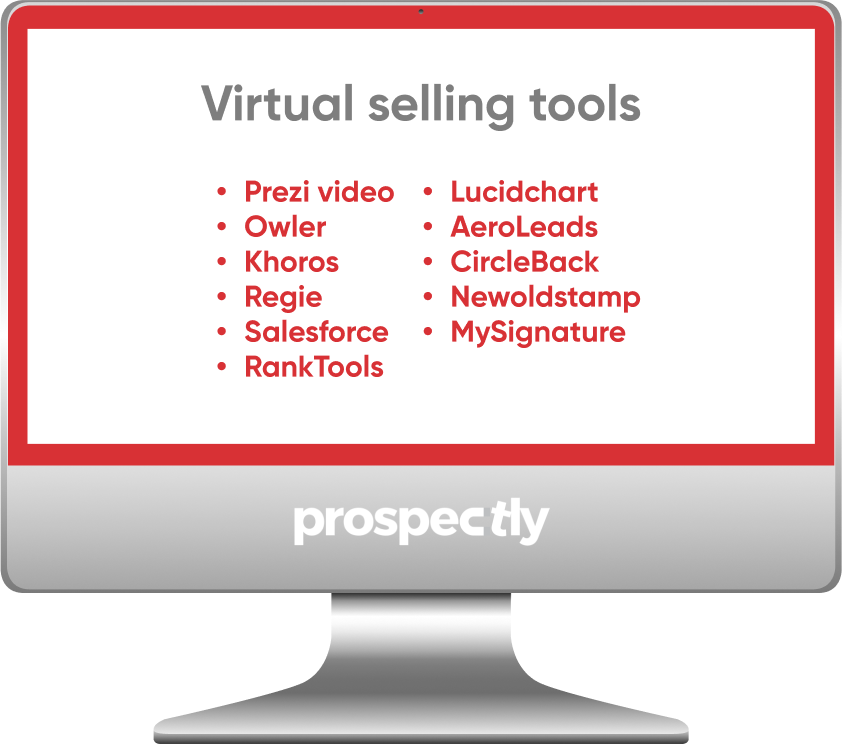
Check out this video on additional virtual selling tips from the CEO of SalesGravy and author of Virtual Selling, Jeb Blount.
Way forward
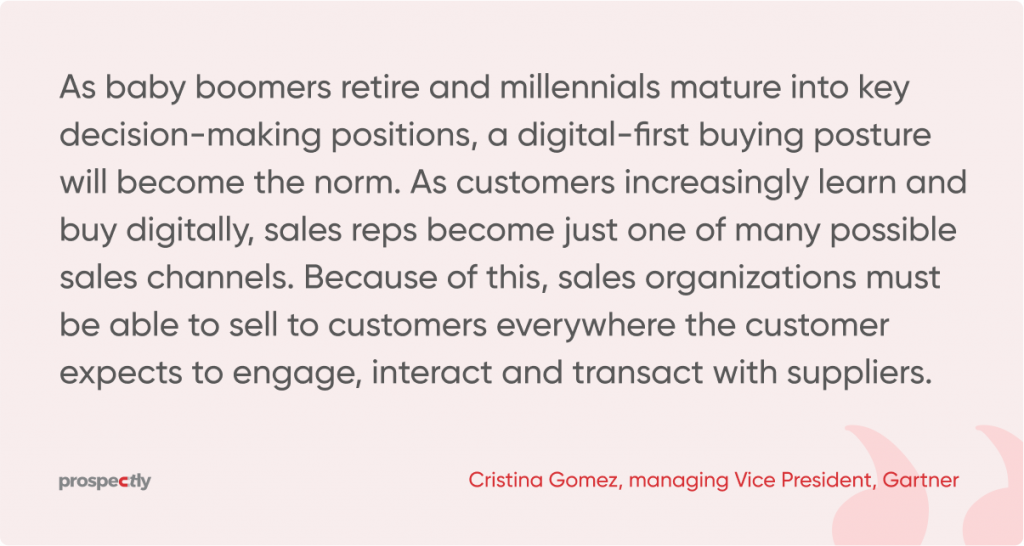
Virtual selling has opened up a whole new world for sellers, transcending the limitations of geography and commerce (money spent on in-person sales). According to Gartner’s Future of Sales 2025 Report, 80% of B2B sales interactions between buyers and suppliers will occur in digital channels. To prepare for the future of sales, you will need to equip yourself with virtual selling strategies and tools, so you can sell everywhere your customers expects to be engaged and interacted. This will call for a transition from analog sales processes to a digital-first approach.




